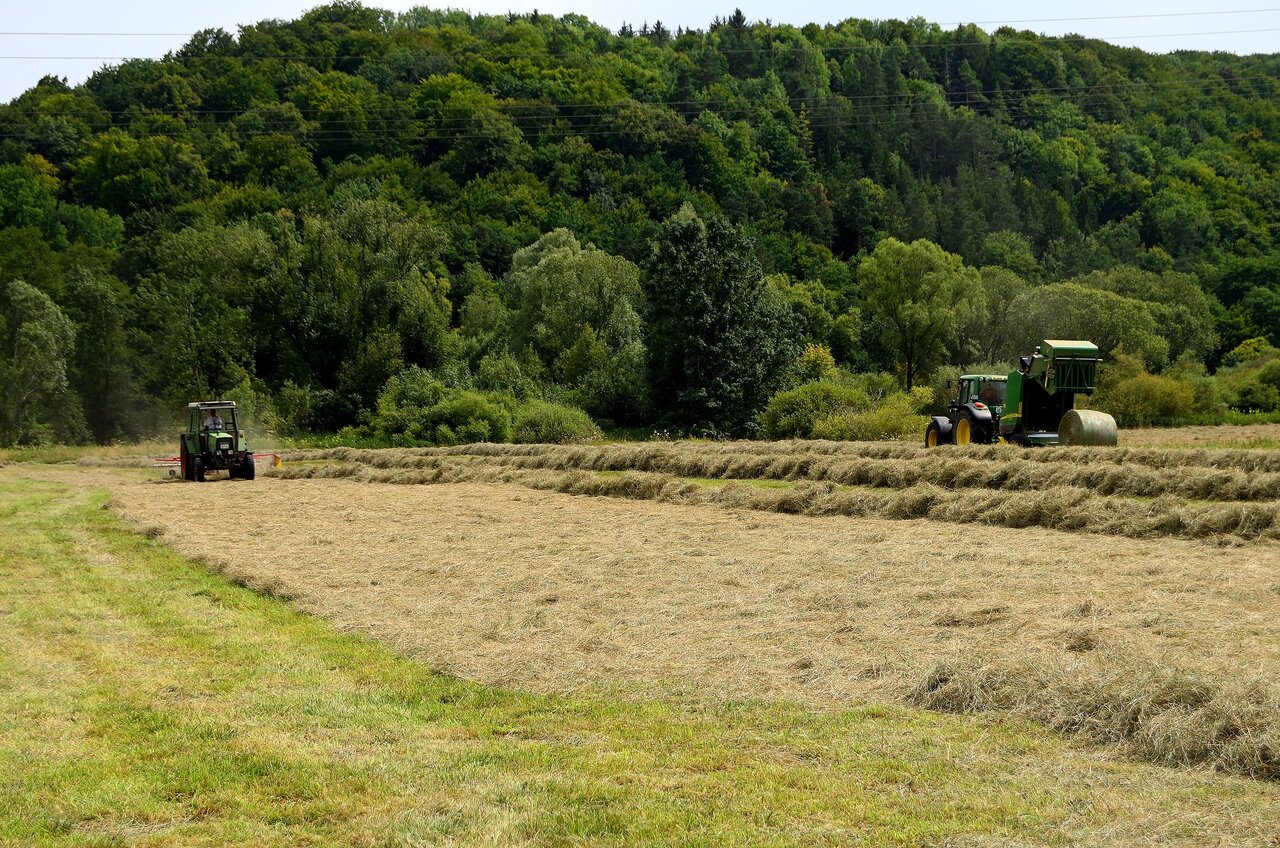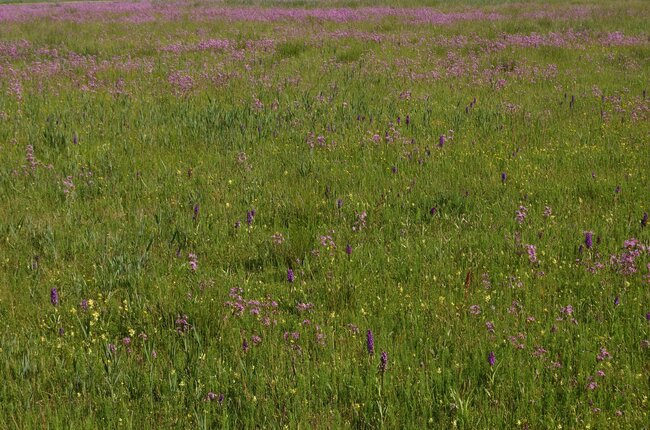Project
Nature conservation value of low intensity hay meadows in Baden-Württemberg

Analysis of factors influencing occurrence, quality and loss of low intensity hay meadows in Baden-Württemberg by multivariate analysis of geodata of nature conservation and agricultural administration
With their high species diversity, low intensity hay meadows are particularly valuable in terms of nature conservation. We investigate where and under which conditions low intensity hay meadows can be better preserved and developed.
Background and Objective
The EU's Habitats Directive (92/43/EEC) requires Member States to protect important habitats and species, restore them to favorable conservation status, and avoid habitat deterioration and significant disturbance of species within Habitats Directive areas. This directive is regarded as one of the pivotal EU's conservation instruments for protecting biodiversity. Notably, low intensity hay meadows in Germany, falling under the Habitats Directive context, are of exceptional ecological importance due to their rich plant and animal diversity, making them valuable for nature conservation efforts.. Baden-Württemberg is in the core area of this habitat distribution.
In December 2021, the EU Commission initiated legal action against Germany due to the decline in both the area and conservation quality of low intensity hay meadows in recent years. In Germany, voluntary agreements within the framework of contractual nature conservation measures are mainly used to encourage farmers to manage land in a way that serves the objectives of the Habitats Directive in grassland. In order to increase the effectiveness and efficiency of the support programs, it is important to understand the outcomes of these measures to date.
Therefore, we are investigating the relationships between land use or site parameters and the occurrence of low intensity hay meadows, their conservation status, and other additional biodiversity indicators. Furthermore, we identify areas where contractual conservation measures should be prioritized, in order to efficiently and effectively restore the quantity and quality of low intensity hay meadows. This prioritization considers habitat type data and agricultural landscapes for the long-term preservation of these habitat areas.
Approach
In addition, we undertake comprehensive big data statistical and multivariate analysis based on extensive datasets provided by the nature conservation and agricultural administration of Baden-Württemberg. These analyses are conducted to elaborate on the positive and negative contributing factors, impacting the conservation status and decline of hay meadows.
Data and Methods
The analyses are primarily based on the following data sources:
- Location-specific data on agricultural land use and utilization of support programs (IACS).
- Geodata on site specific conditions
- Geodata on general land use patterns and changes over time.
Current and historical distribution mapping of low intensity hay meadows
Our Research Questions
- What are the structural characteristics of farms managing low intensity hay meadows? Do these characteristics differ from those of neighboring farms without low intensity hay meadows?
- Is there a correlation between the structural characteristics of the farm or the site characteristics of the area and the conservation status or loss of meadows?
- To what extent does the location of low intensity hay meadows within specific protected areas influence their conservation status or the presence of a loss area?
- Which factors best explain the conservation status of low intensity hay meadows or the presence of loss areas?
Thünen-Contact

Involved Thünen-Partners
Funding Body
-
Bundesland Baden-Württemberg
(national, öffentlich)
Duration
3.2023 - 12.2025
More Information
Project funding number: B-Nr 4500911314/24
Project status:
ongoing

![[Translate to English:] [Translate to English:]](/media/_processed_/2/0/csm_LV_Bei_Hornburg_Quelle_Johanna_Fick_neu_da89674833.jpg)
![[Translate to English:] [Translate to English:]](/media/_processed_/2/0/csm_LV_Bei_Hornburg_Quelle_Johanna_Fick_neu_3aae309567.jpg)






